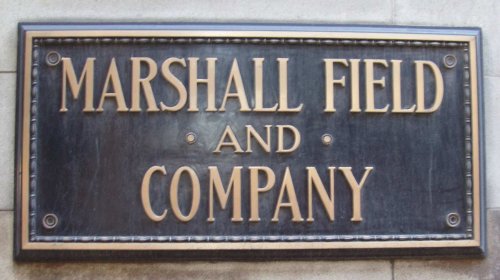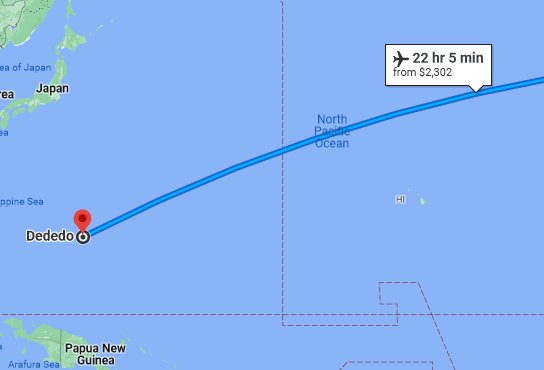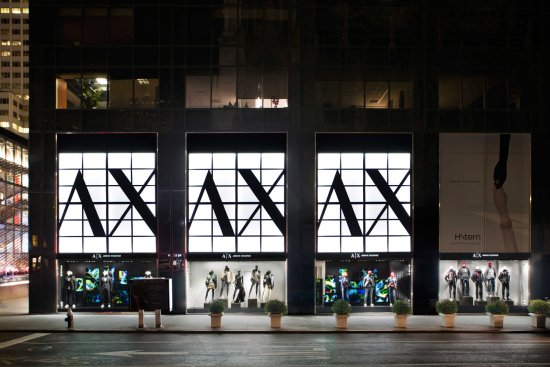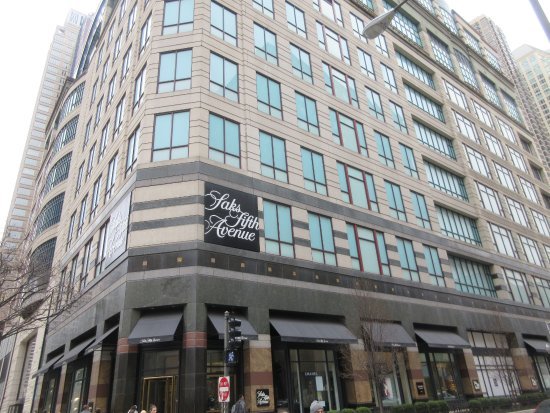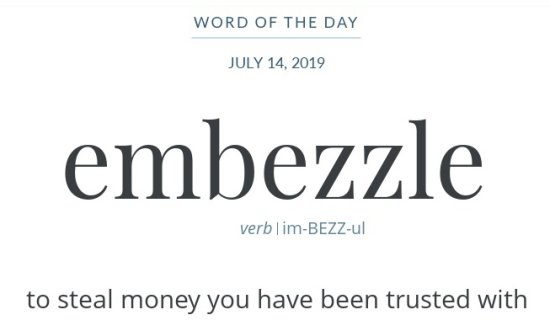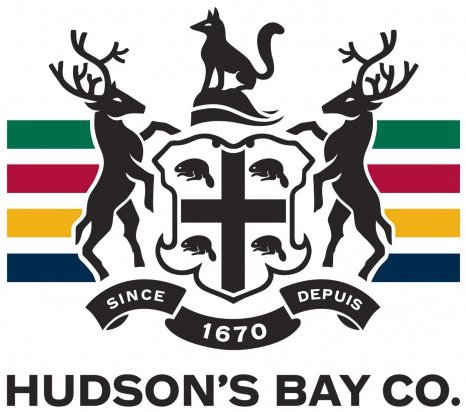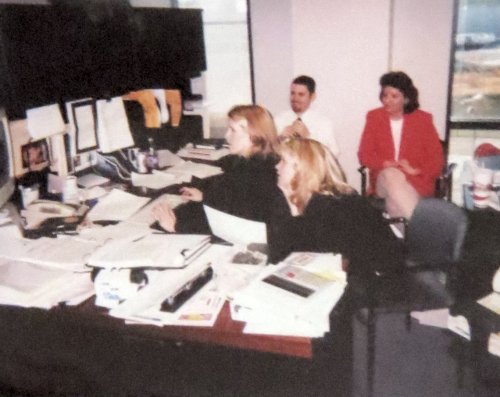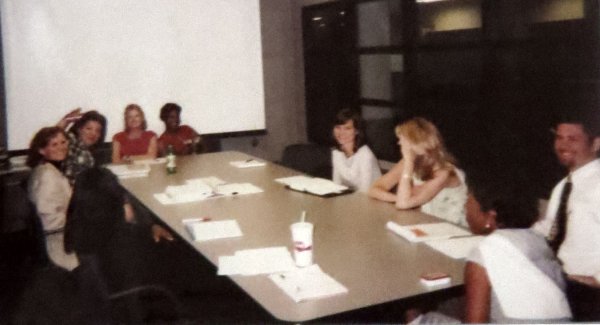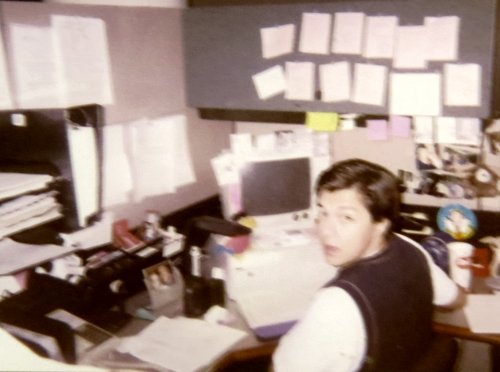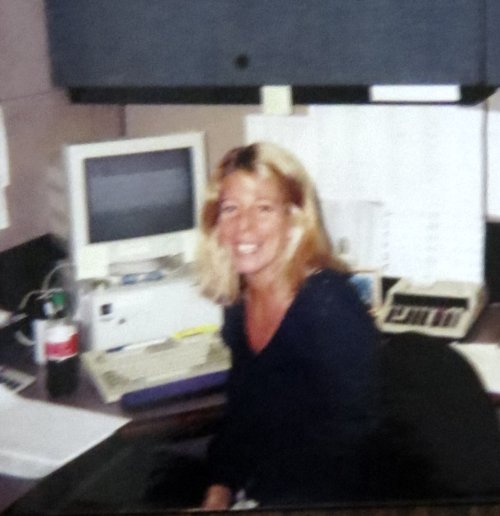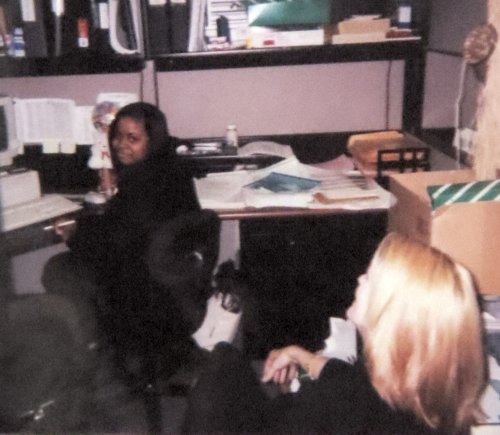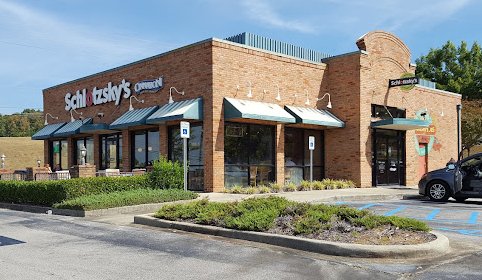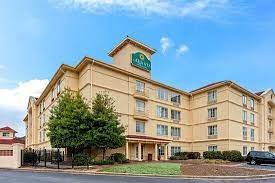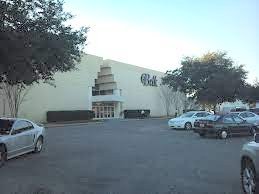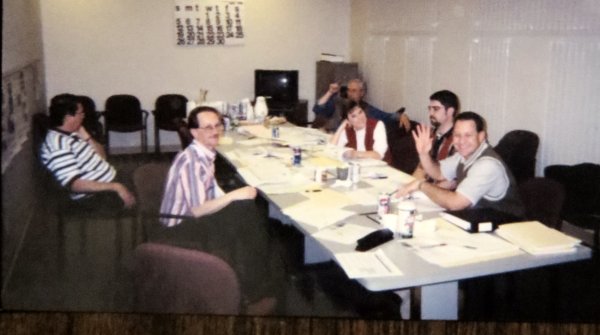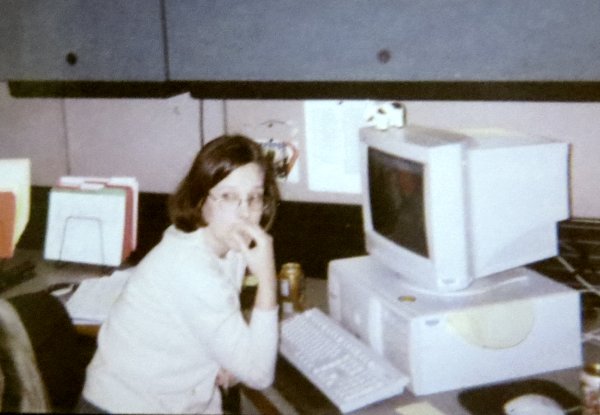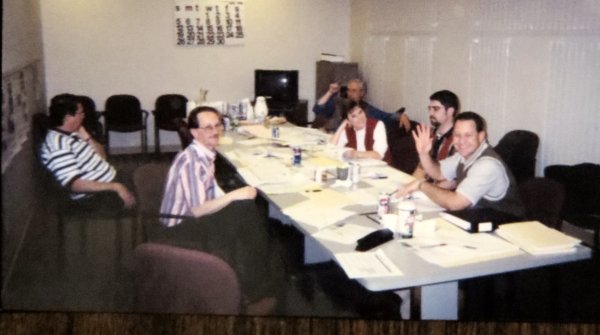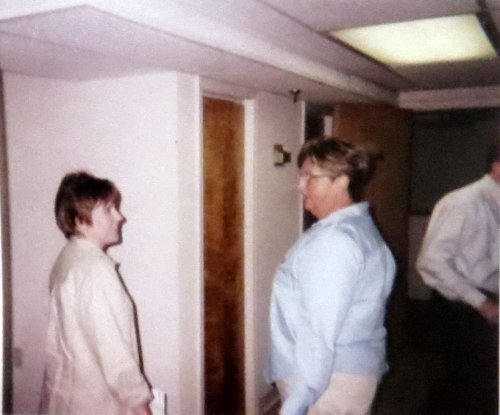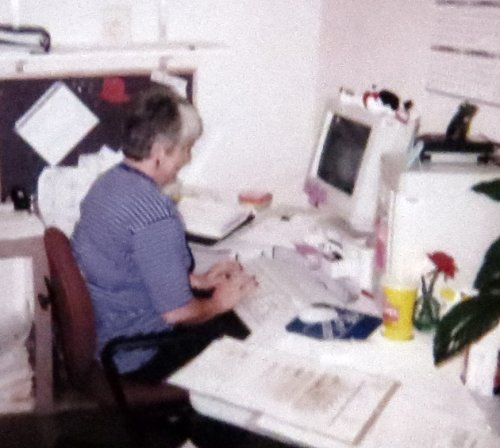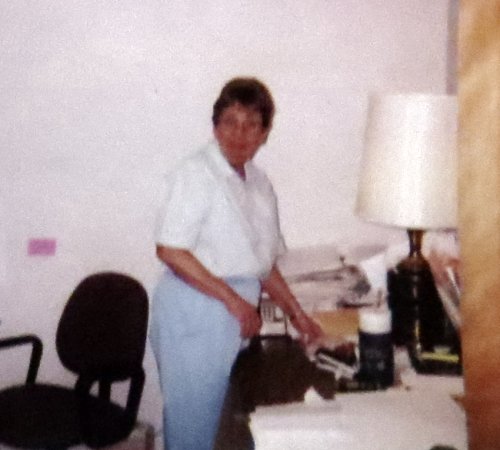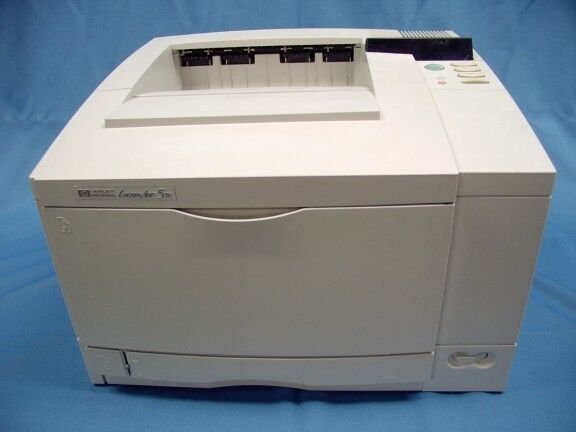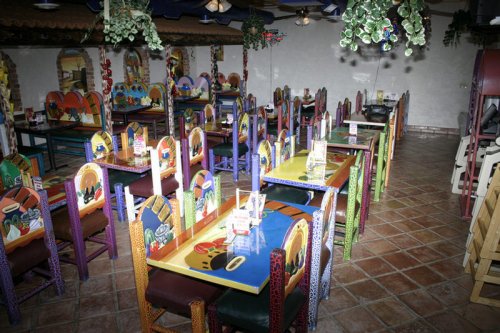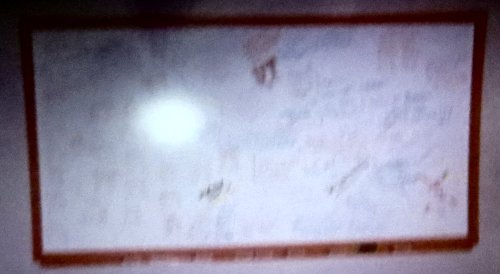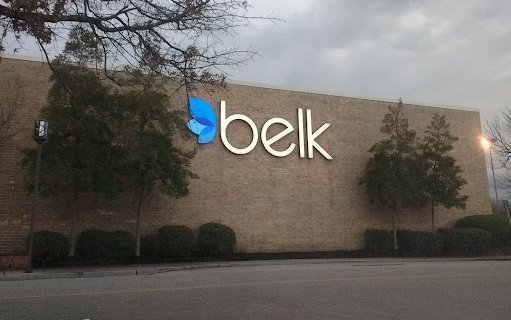Agendas for meetings. Continue reading
Between January of 2001 and November of 2006 I met pretty often with Denise Bessette (introduced here), who was by then my partner and VP of Application Development. I found a folder of Microsoft Word files for the agendas that I wrote up for these strategy meetings. Starting in 2003 the meetings became more regular. They occurred on many if not most Wednesdays, the day that I was most likely not to be at a client’s.
We generally ate lunch together at an order-at-the-bar restaurant on the west side of the river. It had picnic tables near a small stream. I can’t remember the name of the place. I took a drive in the area that my memory associated with its location, but I could find no trace of it. I suspect that it closed, and the land was bought by a developer who put it to another use, perhaps condominiums.
The following summaries are mostly in chronological order. Almost every AdDept client is mentioned at some point. Separate blog entries with much more details have been posted for each of them. They can easily be found using the 1948 Project’s master index program, which is available here.
Many items on the agendas are repeated on subsequent agendas. A few of them persist over years. These were issues for which we never found solutions. The most obvious examples were the efforts to find additional uses for AxN that would benefit newspapers and/or advertisers.
By 2001 the nature of and name for AxN1 had been decided. Our focus was on how to roll it out to the AdDept clients and what we could do to make it more attractive both to the advertisers and the newspapers. We also discussed potential support issues and how the new model 170 that TSI had recently purchased could handle the load of handling the traffic from AdDept clients and newspapers. Occasionally we talked about personnel and other business-related matters.
By 2002 the business environment for large department stores had changed dramatically. Before listing the agenda for one of the meetings I wrote, “We need to change our attitude 180 degrees. Previously we had excess demand and were struggling to increase our capacity to meet it. Now we have excess capacity, and our customers are frugal.”
I had used Net.Data2 extensively for AxN. At the time it was the only thing available on the AS/400 that could interact with the database. By 2002, however, IBM was telling people not to use it. However, it was several years before IBM provided an equivalent tool. Java3, which I had studied extensively and had concluded was not suitable for what we wanted to do, was IBM’s solution to everything.
I was surprised to read how uncertain we were about the willingness o AdDept clients to use AxN. The meeting in March mentioned the need for a second installation. Before reading this I was pretty sure that Belk4 was the first, but maybe someone else had used it on a limited basis.
In 2003 Denise and talked a lot about what kind of programming was marketable to our clients. We investigated quite a few products that claimed to make it easier to make native AS/400 programs web-based . We also talked about what features could be added to AxN so that it would be more valuable to advertisers or newspapers. Usually one of the last items on the list was whether we should spend time converting our code from BASIC to RPG or something else.
In May Sue and I took our first vacation in Italy. I wrote a journal about that adventure and posted it here.
The meeting of November 5 was the first mention of Bob Wroblewski, who has been introduced here. The next few agendas mostly consisted of the same items.
In January of 2004 Bob and I flew to California to visit Robinsons-May and Gottschalks. Bob then started enrolling Rob-May’s papers. After that the process of getting newspapers to subscribe to AxN snowballed for several years. At about the same time our long courtship of Dick’s Sporting Goods finally paid off with a contract for AdDept. So, in only two years the outlook for TSI had improved greatly.
In February it occurred to me that there might be one dominant software company for the newspaper business. If we could create an interface with their system, it could advance the AxN project tremendously. However, I later discovered that each paper, if it had anything at all, had developed its own software or paid someone to do it. There was no uniformity. Fortunately I discovered that this was a blind alley before I wasted a lot of time, money, and energy on it.
The agenda for the February 18 meeting made it clear that the AxN project was about to take off. Most of the long-time AdDept users had at least been contacted. Stage Stores was enthusiastic, and they had just acquired another chain named Peebles. Finally, Dick’s Sporting Goods had finally signed the contract to purchase AdDept. To deal with the expected increase in use of the Internet by the newly subscribing newspapers Denise was arranging for installation of a T-1 line from AT&T with the Cox Cable connection as backup.
The March 3 agenda closed with a mention of the NAA, which was the abbreviation for the Newspaper Association of America (changed to News/Media Alliance in 2016). I eventually talked with someone at its headquarters, but I foresaw that it would take a lot of time and effort to build a productive relationship with the organization. It might have been a good project for Doug Pease (introduced here) or Jim Lowe (introduced here), but at that point they were in the rear-view mirror. I never thought that this would have been a good fit for Bob. Besides, he was busy talking to newspapers, or at least soon would be.
It took me a few minutes to decode this entry on the entry for March 24: “Robinsons: Lower price for LANG?” LANG was the Los Angeles Newspaper Group,.5 a company that printed and distributed tabloids in Los Angeles and its suburbs. Advertising for all those papers was managed from one central location. TSI agreed to send them one bill. We treated them like one large paper with several editions.
In April we were waiting for Dick’s to begin the solicitation for AxN before we approached Macy’s West and RadioShack. The April 21 entry contained positive news about Filene’s use of AdDept for accounting, including the monthly closing process. The next week Denise and I discussed the proposed trip to talk with Hecht’s main paper, the Washington Post. I ended up visiting them on May 14. It gave me quite a thrill, but I don’t think that they ever agreed to use AxN. Apparently we also considered a press release about being in business for twenty-five years, but I am pretty sure that we never did it.
The agenda for May 26 poses this question about Filene’s: “Have they made a big mess?” Bon Ton agreed to send letters to its newspapers about AxN.
In June we discussed various methods of emailing claims. I don’t recall that we ever took any action on this. There was ominous news from Federated that they put all quotes on hold. The total number of orders in AxN exceeded 100,000. The June 30 agenda announced that Dick’s was moving into its new building over the subsequent weekend.
The first item on the July 21 agenda was “Denise’s three issues”. I wonder what they were. Item #10C talks about a follow-up meeting with the Washington Post that never happened. The next week’s agenda explained that they did not respond to my email. A second e-mail was sent on August 4. On August 25 (my dad’s eightieth birthday) I called the Director of Advertising Services.
Something distressing was evidently going on at Parisian, but I don’t remember what it was. That disclosure was somewhat offset by the following good news: “RadioShack: 34 active; 39 testing; 22 Macy’s West; 15 L&T; 4 Parisian; 56 other.” RadioShack did one of its four geographic divisions at a time. The last two entries brought up new subjects: “How can we make better use of my time and Lucia’s6?” and “5-year plan”.
The August 4 agenda was the first to mention SQL7. I used SQL for all of the AxN programs, but the AdDept programs mostly created temporary indexed output files that were populated by one program and read by another using IBM’s recommended approach, ISAM (Indexed Sequential Access Method).
Marshall Field’s (introduced here), the last big installation of the May Co. version of the AdDept system, was first mentioned in the agenda for September 8. We were very excited about the meeting scheduled for September 16 at Hecht’s advertising department in Arlington VA. By this time the work for the Peebles installation at Stage Stores was operational enough that we were ready to solicit their newspapers for AxN.
I was serious enough about contacting companies that sold software for ad agencies that I spent $35 to buy the booklet from the AAAA. I questioned whether we should write to each of them to propose an interface with their system and AxN. I don’t remember ever doing so.
The agenda for November 1 mentioned that Field’s used an ad agency for both broadcast and newspaper. My recollection was that they started using AxN almost immediately and dropped Haworth, the agency that bought newspaper space. However, later entries seem to contradict this. The same agenda mentions that TSI was carrying $55,000 in questionable receivables in the last month of its fiscal year.
The November 10 agenda mentioned that—after months of foot-dragging—Federated Systems Group was finally going to “cut over” to their new AS/400 system. During this period we were worried about providing support for AxN for Macy’s West’s newspapers in Hawaii and Guam. This was needless. The papers subscribed for years without any problems. This was also the last agenda that included a mention of a press release about TSI’s twenty-fifth anniversary.
A major issue early in the year was how to handle the process for installing changes that Dick’s had forced upon us. There were other issues, too. The first agenda of the year ends with the question: “How can we get this installation on the right track?”
Two minor enhancements to AxN for the advertisers had been completed: custom emails and downloading of email addresses. However, I had apparently given up on the possibility of interfacing with computer systems used by the newspapers. There was also a process for reconciling the orders on AxN with the schedule on AdDept.
By March 10 we had a big programming backlog because of the large number of difficult jobs for Marshall Field’s. Denise controlled this process. I simply asked, “How can I help?” In the same meeting we discussed for the first time what, if any thing, we should do to forestall Macy’s from replacing AdDept with the system known then known as FedAd that had been developed by Burdines. Our contact at Macy’s West stated that “it did not exist”.
At the March 25 meeting we talked about Macy’s East for the first time in many months. For the April 28 and May 4 meetings there is separate agenda for AxN. For some reason I seemed worried about using it at Foley’s and Stage Stores.
The first item on the regular May 4 agenda was one word: “Lucia”. Lucia was able to handle much more challenging projects than our other administrative employees. The problem was trying to come up with things for her to do. Another issue on the same agenda posed some interesting questions:
- How could we set ourselves up to manage systems for our small clients? Bon Ton, Gottschalks, Neiman Marcus
- IBM (like Federated)?
- TSI
- Dedicated high-speed line for each user?
- On the net?
- Telnet? How would they print? Pdf?
- VPN: AS/400 to AS/400?
- VPN: PC to AS/400?
- High availability?
- Disaster recovery?
- A third party?
We did not spend a great deal of effort on trying to provide “cloud” computing for our customers. It would have involved a great deal of expense and risk. Just seeing that term “disaster recovery?” item gives me the chills.
Later in May Sue and I took our second Italian vacation with our friends Tom and Patti Corcoran. I wrote a journal again, but this time I had a camera. The results are posted here.
The agenda for June 2 began with the surprising news that Chuck Hansen at Marshall Field’s had asked me to back off on AxN. It also mentioned the agenda for a meeting with Macy’s Marketing on 5/17. It probably intended to say “6/17”. The next agenda, dated July 8, only stated, “Follow up with …” I must have forgotten the name (Robin Creen) of the lady with whom I met at Macy’s Corporate Marketing. There is also a reference to Bloomingdale’s. I suspect that this was in response to information from Tom Caputo, who worked with AdDept at both Lord & Taylor and Saks Fifth Avenue, that Bloomies had never taken the FedAd software out of the box.
The July 11 agenda has some detailed information about a proposed newsletter publicizing how AdDept handled inserts. Some of these enhancements were done for Dick’s.
The August 26 agenda has a new and somewhat mysterious major topic called “AdDept ideas”. The two subtopics are “SpooliT8 ($9K) or other Excel” and “Service Bureau”. I think that SpooliT made .csv files out of spooled output files. It may have had a few other features.
Throughout this period there were references to The Oregonian, the major paper in the Portland area that stopped paying invoices for AxN without canceling and never responded to attempts to find out why.
The agenda for September 14 mentions the long letter that I sent to Robin Creen. Its contents are posted here.
The agenda for October 12 had several tantalizing references. It began by stating that IBM’s VPN9 product, which TSI used for communicating through the Internet, with clients’ AS/400s would be activated on the following Saturday. It also reported that a newsletter had been sent out.
Robin Creen topped the October 24 agenda, but there were no details. The second item referred to renewal of iSeries News, a magazine.that catered to the AS/400 community. It had undergone many name changes, and the content had also evolved. We kept all of the back copies in the shelves that in 2023 are in my office. When we closed down the company (details here), I threw all of them away.
The third item was “SBC Contract”. I don’t remember SBC, but I suspect that it was an IBM Business Partner that had sold more systems than we had or had somehow managed to deal directly with IBM. During this period TSI was not allowed to quote or sell any IBM products. We had to go through a Super-VAR.
The fourth item was “Lucia” with no details. The fifth was “AT&T Global: do we need it?”. I am pretty sure that this product allowed me to get my email when I was on the road. In the days before Wi-Fi I had an AT&T product installed on my laptop that allowed me to use a phone line in my hotel room to sign on to AT&T and look at my email.
We must have received an inquiry from Sport Chalet10 a chain of stores in California that was similar to Dick’s. Until I saw this entry again I had completely forgotten about them. Evidently I wrote them a letter and sent them a newsletter, but nothing came of it.
The last agenda for 2005 was dated December 6. The #1 item was the blitz to get an AdDept system for Macy’s South up and running in time for the season that started at the beginning of February. The second item was an inquiry from Circuit City11. This was another dead end.
The “My disk recovery” entry brought back some really bad memories. I think that I recovered everything on my computer’s hard drive, but it was costly and painful. The best part was that I got an external hard drive12 that made it very easy to back everything up.
There are no entries for 2006 until June. I remember being under extreme pressure to bring the two huge AdDept installations at Macy’s South and Marshal Field’s up to speed. Meanwhile we received the crushing news that Macy’s and the May Co. had merged, and Macy’s would be the dominant player.
The agenda for June 13 began with the word Corum. I am pretty sure that it referred to broadcast buying software. Based on the date it was probably associated with Macy’s South.
That agenda also contained a major item that simply stated “Modernizing and marketing AdDept”. We never did find a feasible way to transform the AdDept screens into something that looked modern. We made more marketing attempts after this, but they did not amount to much. This was the peak period for AxN. More than four hundred papers had subscribed. TSI’s administrative person spent a good deal of time printing and mailing invoices and depositing checks from newspapers.
The agenda for October 11 was startlingly different. It mentioned two AS/400 models, a 170 and a 270. My recollection is that we did development and ran the business on the 170, and the 270 was devoted to AxN. It also mentions recruitment. I am not sure whether that referred to the administrative position or programming. The agendas have gotten shorter and shorter.
This agenda also mentioned the C compiler for the 270. Denise was upset at me for even investigating the possibility of converting TSI’s code to C, which was widely used in the Unix world.
In the agenda for October 18 the scary term “Macy’s North” appeared several times. It referred to the company that was formerly called Marshall Field’s. Evidently the marketing (never called “advertising”) department there had never bought into using AxN for insertion orders. They may have still been using Haworth.
“Maintenance” was often mentioned in the agenda for November 1. We probably never charged as much as we could have for the kind of service that we provided our clients. I was evidently still spending quite a bit of time at Belk.
I was surprised to see Circuit City mentioned again on the agenda for November 8. We must have received another phone call. The term “Foley’s project” also appeared. I am pretty sure that that was the code name for the long and frustrating effort that Denise and I undertook to sell the company.
The last agenda that I have was dated July 10, 2007. It contained only four items:
- Trip to Macy’s West
- 515
- Dick’s quotes
- Foley’s
Denise and I continued to meet, but not on a formal basis. By then I had almost given up on selling more AdDept systems. There had been so much consolidation in retail that the number of good prospects for the system had shrunk to almost nothing. Nordstrom and Dillard’s would have looked nice on our client list, but it was hard to think of anyone else that was worth pursuing.
We still did quite a bit of custom programming during the next five or six years, but managing the list of open jobs did not require the juggling act that had characterized the previous decade.
The AxN business decreased for a few reasons. The big stores no longer trusted newspaper ads to bring in customers as they once did. Newspaper readership was way down. Some of the AdDept clients outsourced their buying to agencies or media services. That always meant a drop in the number of papers.
I enjoyed those meetings immensely, and I miss them.
1. The history of the development of AxN is posted here. The system design is outlined here. The description of the process by which it was brought to market begins here.
2. Net.Data was a scripting language written by IBM for the AS/400. It was quite popular, but IBM for some reason decided to drop it in favor of the open source scripting language php, which required implementation of the Zend php engine.
3. Java is an object-oriented language that was developed by people at Sun Microsystems. The company released an open-source version. Java was almost the only thing that IBM talked about at the PartnerWorld convention that Denise and I attended in 2000. It is described here. On the AS/400 applications written in Java required a lot more resources than programs written in the native languages. If run on the same box the Java programs were slower, a lot slower.
4. The history of the AdDept installation at Belk is posted here.
5. In 2016 LANG merged with the Orange County Register and a few other papers. The new organization was called the Southern California Newspaper Group. The third item under the Federated topic was “AxN letter to four divisions”. Since “Bloomingdale’s” was the second item it mus refer to Macy’s East, West, South, and Florida (Burdines).
6. Lucia Hagan was TSI’s administrative person during this period. She was introduced here.
7. SQL stands for Structured Query Language. It was invented by IBM, but the company did not endorse its use on the AS/400 until 2004.
8. SpooliT is still on the market in 2023! Its website is here.
9. VPN stands for Virtual Private Network. The Wikipedia entry is here.
10. Sport Chalet was sold to Vestis Retail Group in 2014 and was liquidated in 2016.
11. The sad story of Circuit City ended with its liquidation in 2009.
12. I still have that hard drive in 2023. However, I recently discovered that I no longer can find the cable that was used to attach it to a computer, and the company that made it was no longer in business.








